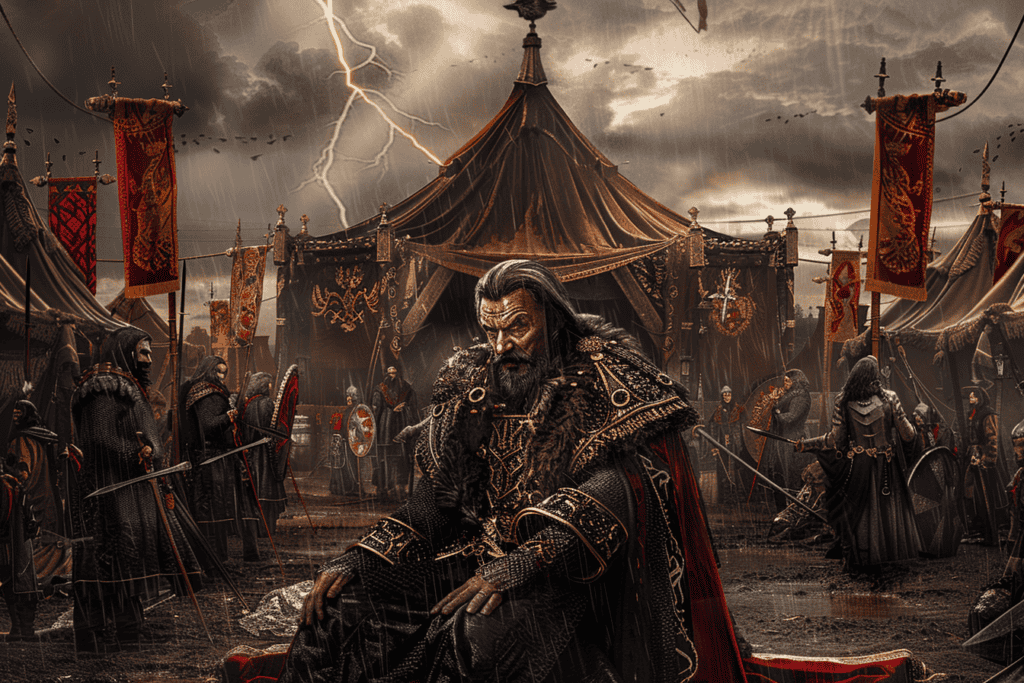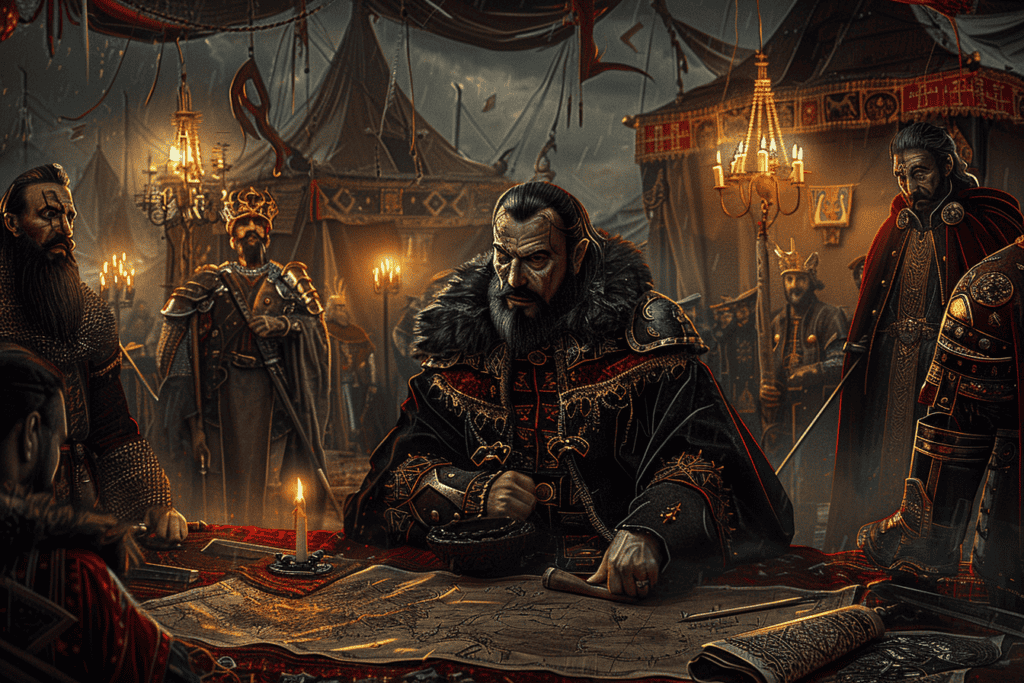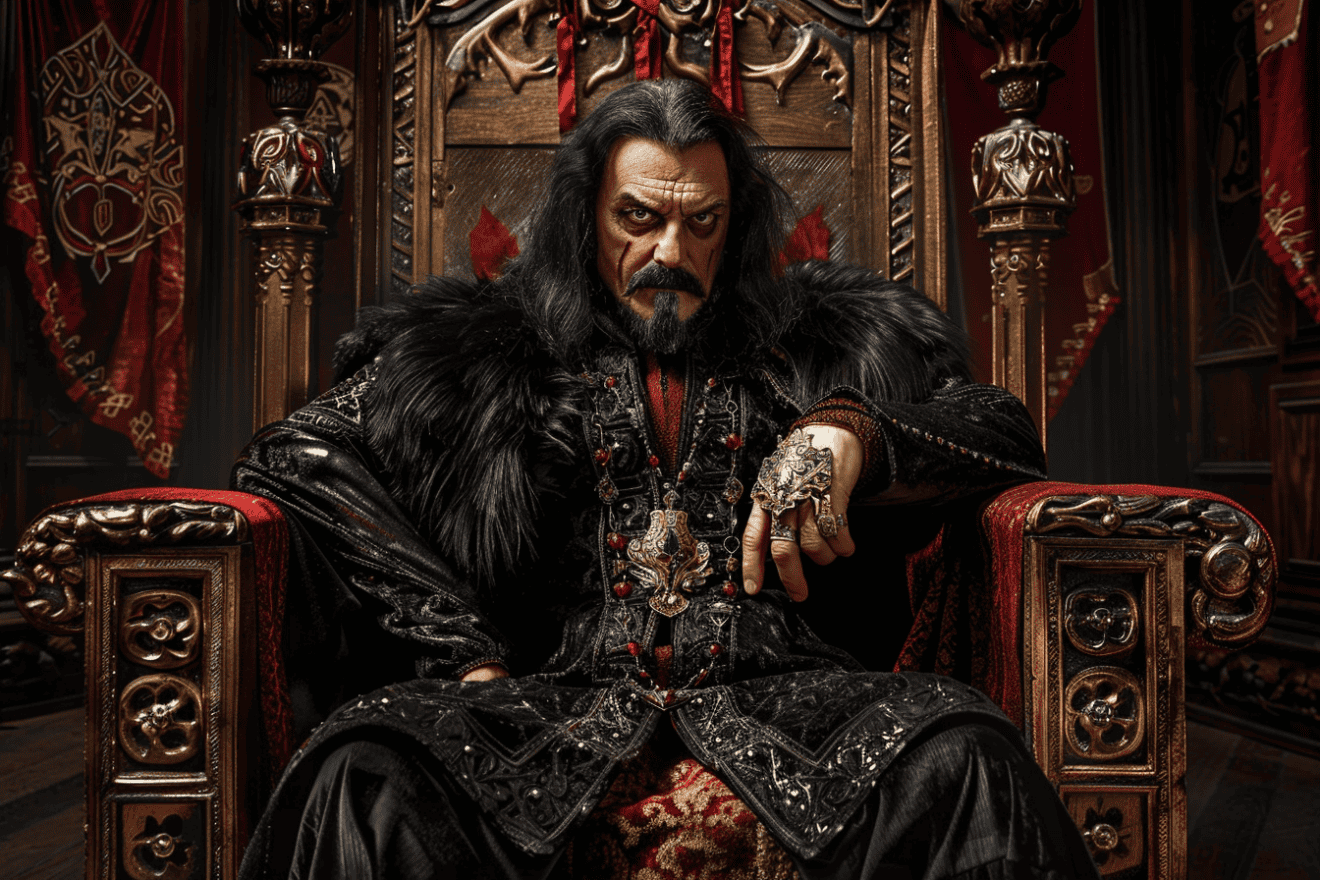Vlad the Impaler, also known as Vlad III or Vlad Dracula, was a ruler of Wallachia, a region in present-day Romania, in the mid-15th century.
He is infamous for his brutal and sadistic methods of punishing his enemies, which included impalement, a slow and agonizing form of execution.
His reputation for cruelty and violence inspired the legend of Dracula, the bloodthirsty vampire created by Bram Stoker in his 1897 novel.

Vlad’s father, Vlad II, was a member of the Order of the Dragon, a Christian crusading order that fought against the Ottoman Turks.
The name “Dracul” means “dragon” in Romanian, and was given to Vlad II by his fellow knights. Vlad III inherited the title of “Dracula” from his father, which means “son of the dragon”.
This connection to the dragon and the Order of the Dragon contributed to the legend of Dracula as a fearsome and powerful creature.
Despite his reputation for violence and cruelty, Vlad the Impaler is considered a national hero in Romania for his resistance to the Ottoman Turks.
His methods of punishing his enemies were seen as necessary to protect his people from invasion and oppression. However, his legacy as a brutal ruler who inspired the legend of Dracula continues to fascinate and terrify people to this day.
Early Life and Rise to Power

Vlad III, also known as Vlad the Impaler or Vlad Dracula, was born in 1431 in the Transylvanian city of Sighisoara. He was the son of Vlad II Dracul, who was a member of the Order of the Dragon, a chivalric order founded by the King of Hungary to protect Christianity in Europe against the Ottoman Empire.
Vlad III spent most of his childhood in the court of his father, who was a prince of Wallachia.
In 1442, Vlad II Dracul was forced to join the Ottoman army and send his sons, including Vlad III, to the Ottoman court as hostages.
The young Vlad spent several years in captivity, where he learned about Ottoman customs and military tactics. He also developed a deep hatred for the Ottomans, which would later influence his actions as a ruler.
Ascension to the Throne
In 1447, Vlad II Dracul was assassinated by his political rivals, and his eldest son, Mircea, was blinded and buried alive. Vlad III and his younger brother, Radu, managed to escape from the Ottoman court and fled to Hungary, where they were raised by King Sigismund.
In 1456, Vlad III returned to Wallachia with the support of the Hungarian army and took the throne from his cousin, Vladislav II.
During his first reign, Vlad III established himself as a cruel and ruthless ruler, known for his use of impalement as a form of punishment and his attacks against the Ottoman Empire.
In 1462, Vlad III was deposed by the Ottoman army and fled to Hungary, where he was imprisoned for several years. He regained the throne in 1476 but was killed in battle against the Ottomans later that year.
Vlad’s Reign and Military Campaigns

Consolidation of Power
Vlad III, also known as Vlad the Impaler, became the ruler of Wallachia for the first time in 1448. His reign was marked by a series of bloody battles and atrocities committed against his enemies.
Vlad’s primary goal was to consolidate his power and establish his authority over the region. He achieved this by eliminating his rivals, including the boyars, who were the noblemen of Wallachia.
Conflicts with the Ottoman Empire
Vlad’s reign was also marked by conflicts with the Ottoman Empire. The Ottomans demanded that Vlad pay them tribute, but he refused.
In response, the Ottomans invaded Wallachia in 1462. Vlad responded by launching a series of raids and guerrilla attacks against the Ottoman army. He also employed brutal tactics such as impalement to strike fear into the hearts of his enemies.
Tactics and Impalement
Vlad’s military campaigns were characterized by his use of unconventional and brutal tactics. He employed guerrilla warfare to harass his enemies and disrupt their supply lines.
He also used impalement as a form of psychological warfare. Impalement involved driving a wooden stake through the rectum or torso of a victim and then hoisting them up on the stake to die slowly and painfully.
This gruesome form of torture and execution was meant to strike fear into the hearts of Vlad’s enemies and deter them from attacking him.
Despite his reputation for brutality, Vlad was also a skilled diplomat. He negotiated alliances with neighboring countries such as Bulgaria and Hungary and sought to establish friendly relations with the Saxon merchants who traded in Wallachia. However, his reign was marked by a reign of terror that saw him execute thousands of people, including peasants, noblemen, and hostages.
Cultural Impact and Legacy

Despite his gruesome reputation, Vlad the Impaler is considered a national hero in Romania for his resistance to the Ottoman Turks. His legacy has been celebrated in literature, art, and even tourism. The infamous Bran Castle in Transylvania, which is often associated with Vlad, has become a popular tourist attraction.
Historians continue to debate whether Vlad’s brutal tactics were justified or not. However, to many Romanians, he is seen as a symbol of resistance against foreign invaders and a defender of Christian Europe.
Inspiration for Count Dracula
Vlad the Impaler’s legacy extends to popular culture. Bram Stoker’s novel, Dracula, was inspired by the legend of Vlad and his reputation for brutality.
Although Vlad was not a vampire, Stoker’s portrayal of Dracula as a bloodthirsty villain has cemented Vlad’s place in the popular imagination as the inspiration for the iconic vampire.
The novel has since been adapted into countless movies, TV shows, and other forms of media, further solidifying Vlad’s place in popular culture.
The association between Vlad and vampires has also led to the development of “vampirism tourism” in Romania. Visitors flock to sites associated with the legend of Dracula.
Overall, Vlad the Impaler’s legacy is complex and multifaceted. While he is celebrated as a national hero in Romania, his reputation as a brutal ruler and inspiration for Count Dracula has also made him a figure of fascination in popular culture.










Add Comment